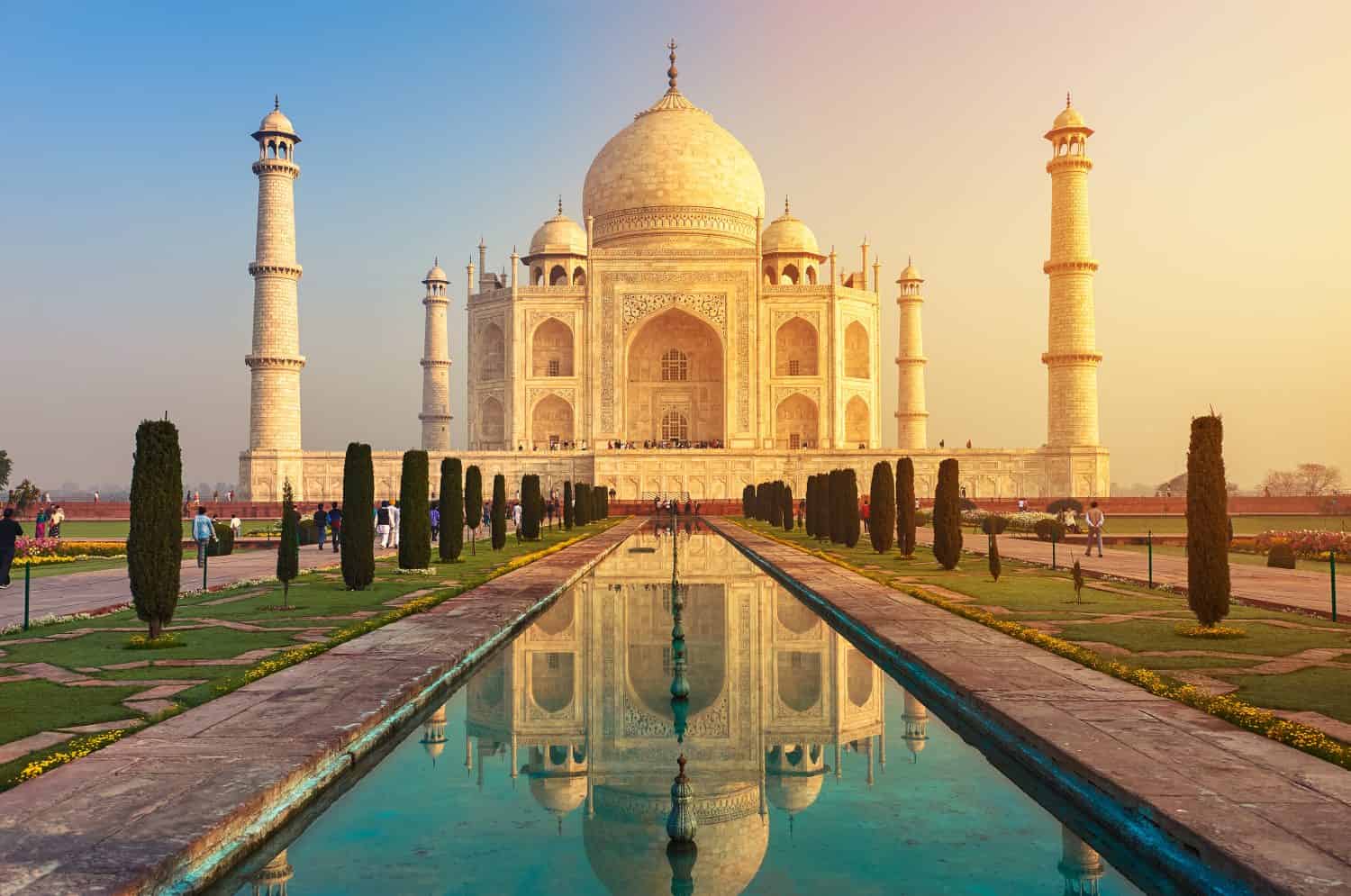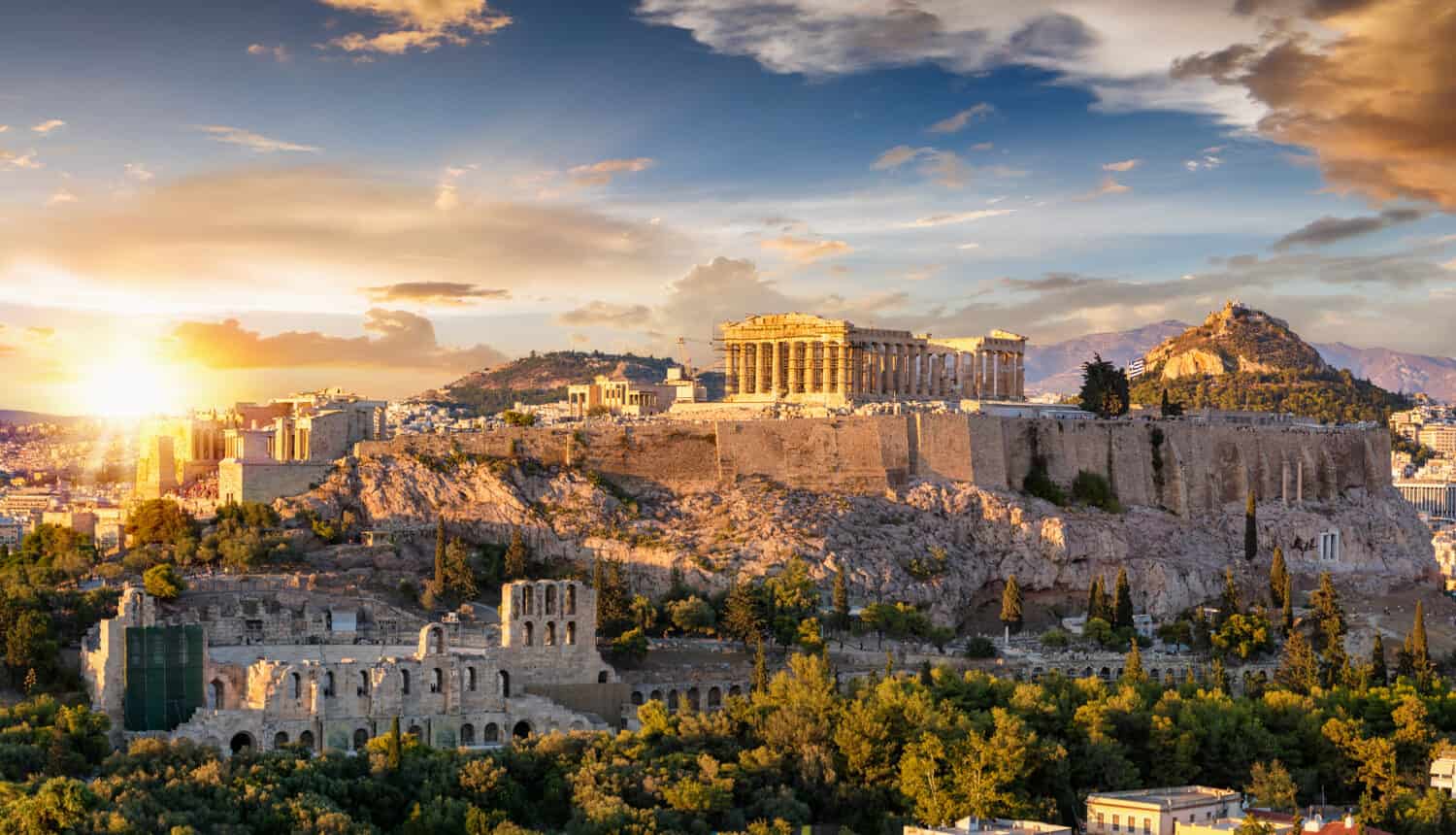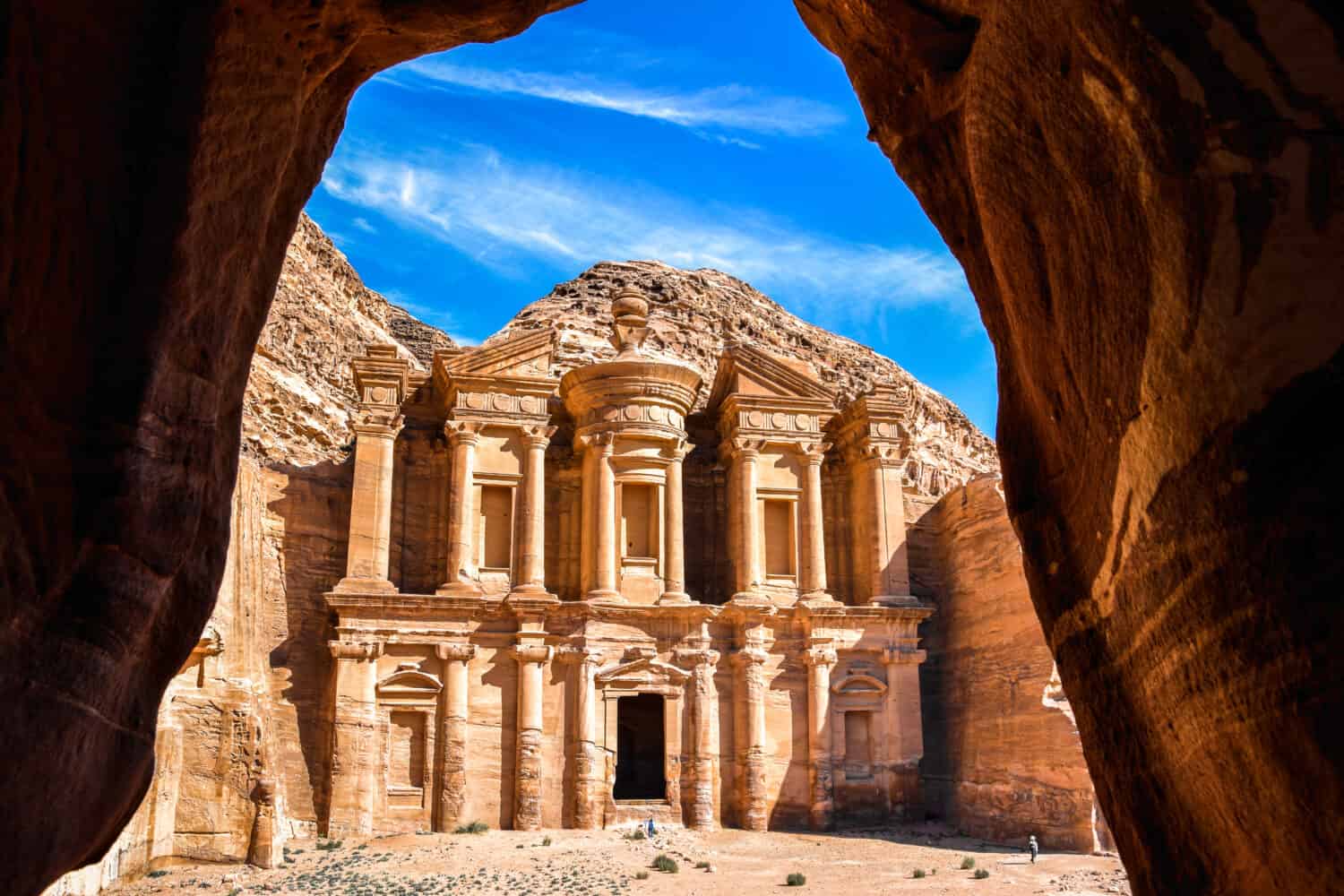UNESCO heritage sites are the world’s most incredible places, credited with outstanding value to humanity. Diverse places on the UNESCO world heritage list range from the Titanic site to dinosaur graveyards, and ancient buildings. There are 1,169 UNESCO sites in total, and Italy has the greatest number at 59. These epic places draw millions of visitors every year, and every one is important, but these are 10 of the most popular UNESCO heritage sites in the world.
1. The Great Pyramid of Giza, Egypt.

The most famous UNESCO site must be the Great Pyramid of Giza.
©StockByM/iStock via Getty Images
Built between 2550 and 2490 B.C. Egypt’s Great Pyramid of Giza housed Pharaoh Khufu’s tomb. It’s the largest of three ancient pyramids and one of the Seven Wonders of the Ancient World.
Recent evidence shows the laborers who built it were well-fed and well-paid, not slaves as was once suggested. Today, over 14 million tourists flock each year to admire its ancient stepped walls and vast proportions.
2. Great Wall of China, China.

Over 10 million tourists visit the Great Wall of China annually.
©iStock.com/SeanPavonePhoto
Over 10 million people visit the Great Wall of China each year.
In 220 B.C. a series of wall sections were joined together to protect southern China from the north, and work continued on the Great Wall until 1644’s Ming Dynasty ended. At that time, it was the biggest military structure anywhere in the world. Recent archaeological digs have discovered it’s 13,000 miles long!
It’s possible to walk some sections of the wall, but it would take over a year to walk the whole distance.
3. Historic Center of Rome, Italy

The Roman Coliseum was the equivalent of a football stadium.
©prochasson frederic/Shutterstock.com
In the historic center of Rome, tourists find the Roman amphitheater, pantheon, forum, baths, palaces of Roman emperors, and early Christian basilicas. Founded next to the Tiber River in 753 B.C. Rome was the center of the world for decades.
An amphitheater called “The Coliseum” is one of its most famous features. This entertainment center served as a place of fun for Roman citizens who watched gladiators, tigers, and Christian martyrs die there.
Today, Rome is a thriving modern city that juggles ancient with new, and over 10 million annual visitors.
4. Angkor Wat, Cambodia

Angkor Wat is a vast Buddhist complex of over 1,000 buildings.
©iStock.com/f11photo
This religious complex stretches over 400 acres and comprises over 1,000 buildings. The complex took 28 years to build (1122 to 1150 A.D) under the reign of King Suryavarman II.
Originally a Hindu temple in the 12th century, it evolved into a Buddhist temple complex over the years. This Cambodian treasure welcomes 2.6 million visitors each year. It’s considered the height of Khmer architecture.
5. Machu Picchu, Peru

Machu Picchu was inhabited by Incas until the Spanish invasion.
©pawopa3336/iStock via Getty Images
15th-century Machu Picchu sits between the Amazon Basin and the Peruvian Andes. It’s a ruined five-mile city divided into residential and farming areas. Around 200 structures still stand on the steep 7,970 foot mountainside ridge, and more than 3,000 steps connect the sections. One of Machu Picchu’s most wondrous aspects is its water collection system that ensured this epic hillside spot flourished.
These incredible ruins are called “The Lost City of the Incas”, because the city was abandoned 100 years after its construction when Spanish conquistadors arrived. Machu Picchu is one of the most popular South American UNESCO sites in the world. Over a million tourists visit every year.
6. Taj Mahal, India

India’s Taj Mahal is a mausoleum for Mumtaz Mahal.
©YURY TARANIK/Shutterstock.com
India’s Taj Mahal is a mausoleum commissioned by Shah Jahan in 1631, but not completed until 1653. Shah Jahan wanted this incredible building to honor his wife Mumtaz Mahal. Its instantly recognizable dome is 115 feet tall, nearly the same height as its walls. It’s an incredible example of Mughal architecture and India’s most famous building.
The Taj Mahal is located in Utter Pradesh on the Yamuna River’s banks. Each year 8 million tourists admire its ivory walls.
7. The Acropolis of Athens, Greece Mainland

Despite wars and earthquakes, the Acropolis is still standing tall.
©Sven Hansche/Shutterstock.com
The Acropolis of Athens in Greece is an ancient citadel dating from the 5th century B.C. The famous statesman Perikles oversaw its construction along with other incredible monuments such as the nearby temple of Athena Nike and the Parthenon.
It’s located on a hillside towering above Athens and was built to honor the city’s patron goddess Athena. A huge statue of Athena stood there at one point, but that’s lost to time. Nevertheless, this impressive building has withstood wars and earthquakes for thousands of years. Today, it receives over three million annual visitors. It’s one of the most popular UNESCO heritage sites in the world.
8. Great Barrier Reef, Australia

The Great Barrier Reef covers an epic 134,000 square miles.
©iStock.com/Cavan Images
Over two million people visit the Great Barrier Reef in Australia annually. This thriving ecosystem covers over 134,000 square miles and became a UNESCO site in 1981.
Situated on the north east Australian coastline, the Great Barrier Reef is home to the world’s largest assortment of coral reefs. Over 400 types of coral live in its waters, along with the threatened dugong and large green turtle.
UNESCO states that no other heritage site contains such rich biodiversity, but this unique seascape is under threat from climate change.
9. Stonehenge, England

Stonehenge is over 5,000 years old. Its pre-dates the pyramids of Egypt.
©AJancso/Shutterstock.com
Standing in an English field next to the A30 road is a 5,000-year-old circular prehistoric monument called Stonehenge. This incredible engineering feat is older than Egypt’s pyramids and Julius Caesar’s Rome.
This circle of standing stone, brought from Wales, has mystified archaeologists for years. Modern research suggests it is just one small part of a wider complex, but its purpose is still unclear.
Around 1.5 million annual tourists visit to wonder why Stone Age humans constructed this space. It’s one of Britain’s most popular UNESCO heritage sites.
10. The Rose City of Petra, Jordan

The Rose City of Petra gets its name from its beautiful rose colored rock.
©tenkl/Shutterstock.com
Petra “The Rose City” is an ancient city in southern Jordan, located 150 miles south of Bethlehem. Most people recognize it for the rose-colored rock cutouts, but this ancient city metropolis was once the center of an Arab kingdom in the 4th century B.C. Its actually half constructed and half cut out of rock.
Petra is threatened by floods and war damage, but it’s still an incredible site visited by just under a million tourists each year.
North America’s Most Visited UNESCO Site

Great Smoky Mountains National Park is North America’s most visited UNESCO site.
©Margaret.Wiktor/Shutterstock.com
The Great Smoky Mountains National Park became a UNESCO World Heritage site in 1983. This vast national park attracts around 12-14 million annual visitors.
Over 90% of this National Park is managed for wildlife and it contains the largest sections of old-growth temperate forests in North America. Over 1,500 black bears live here, alongside many endangered species such as the Indiana bat, spruce-fir moss spider, and northern flying squirrel.
The photo featured at the top of this post is © AlexAnton/Shutterstock.com
Thank you for reading! Have some feedback for us? Contact the AZ Animals editorial team.






